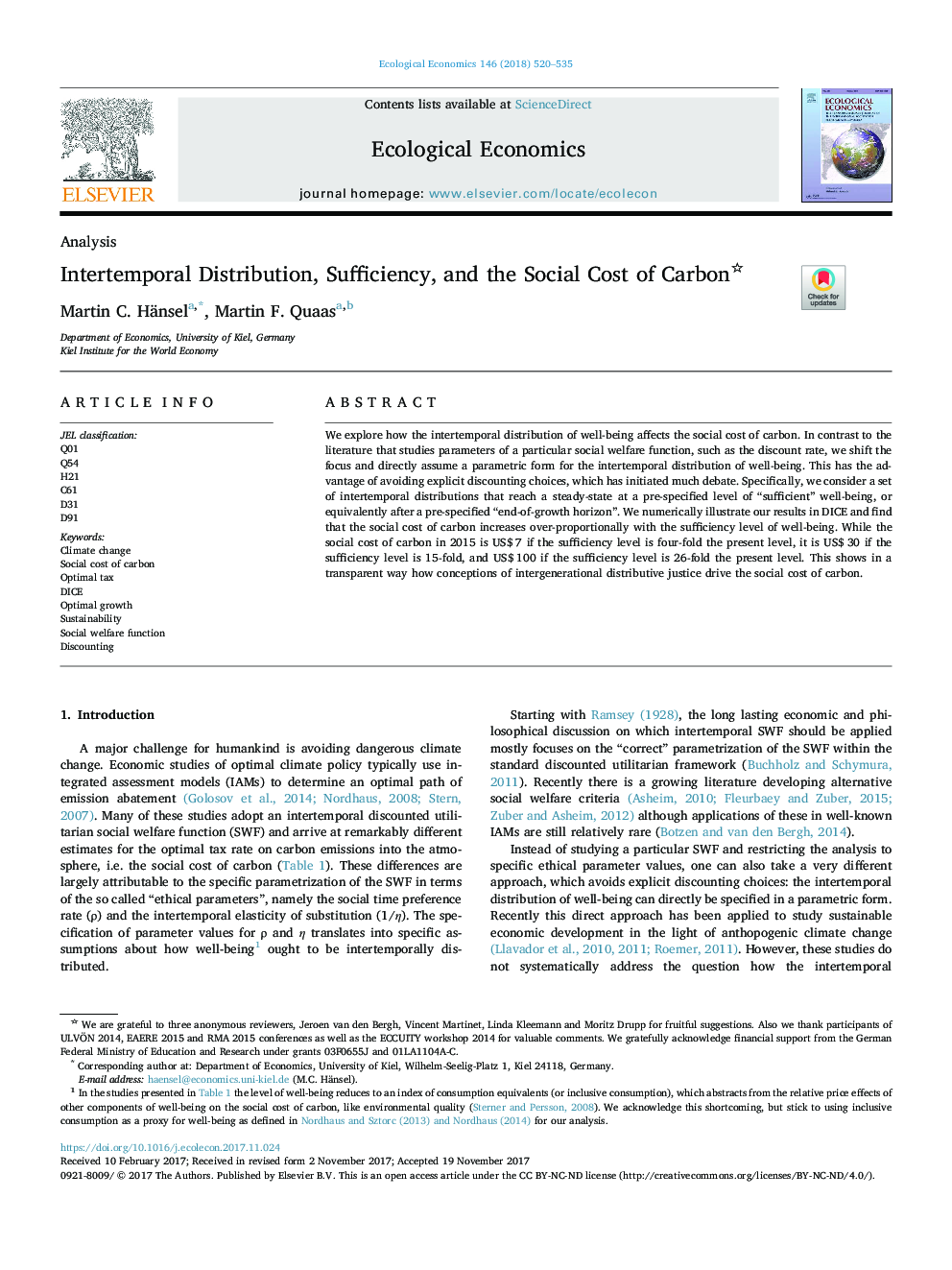| Article ID | Journal | Published Year | Pages | File Type |
|---|---|---|---|---|
| 7344617 | Ecological Economics | 2018 | 16 Pages |
Abstract
We explore how the intertemporal distribution of well-being affects the social cost of carbon. In contrast to the literature that studies parameters of a particular social welfare function, such as the discount rate, we shift the focus and directly assume a parametric form for the intertemporal distribution of well-being. This has the advantage of avoiding explicit discounting choices, which has initiated much debate. Specifically, we consider a set of intertemporal distributions that reach a steady-state at a pre-specified level of “sufficient” well-being, or equivalently after a pre-specified “end-of-growth horizon”. We numerically illustrate our results in DICE and find that the social cost of carbon increases over-proportionally with the sufficiency level of well-being. While the social cost of carbon in 2015 is US$Â 7 if the sufficiency level is four-fold the present level, it is US$Â 30 if the sufficiency level is 15-fold, and US$Â 100 if the sufficiency level is 26-fold the present level. This shows in a transparent way how conceptions of intergenerational distributive justice drive the social cost of carbon.
Keywords
Related Topics
Life Sciences
Agricultural and Biological Sciences
Ecology, Evolution, Behavior and Systematics
Authors
Martin C. Hänsel, Martin F. Quaas,
